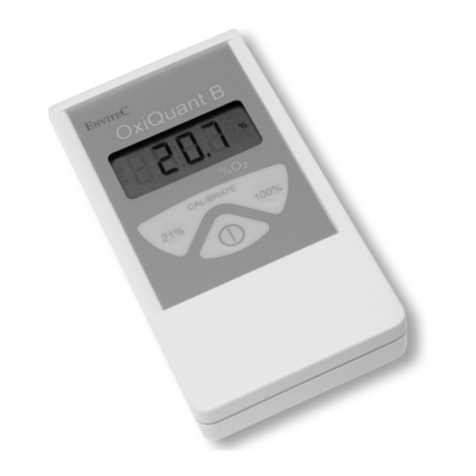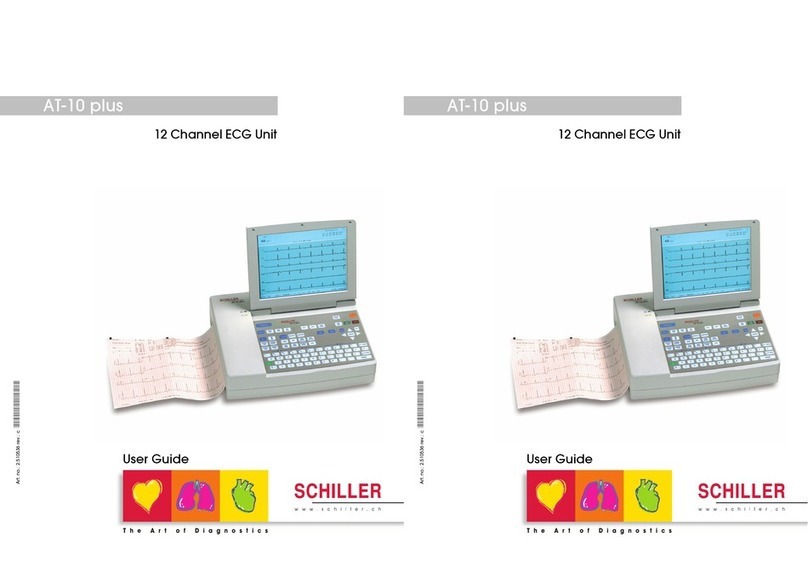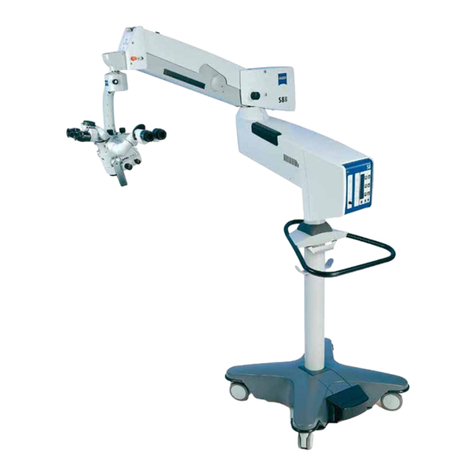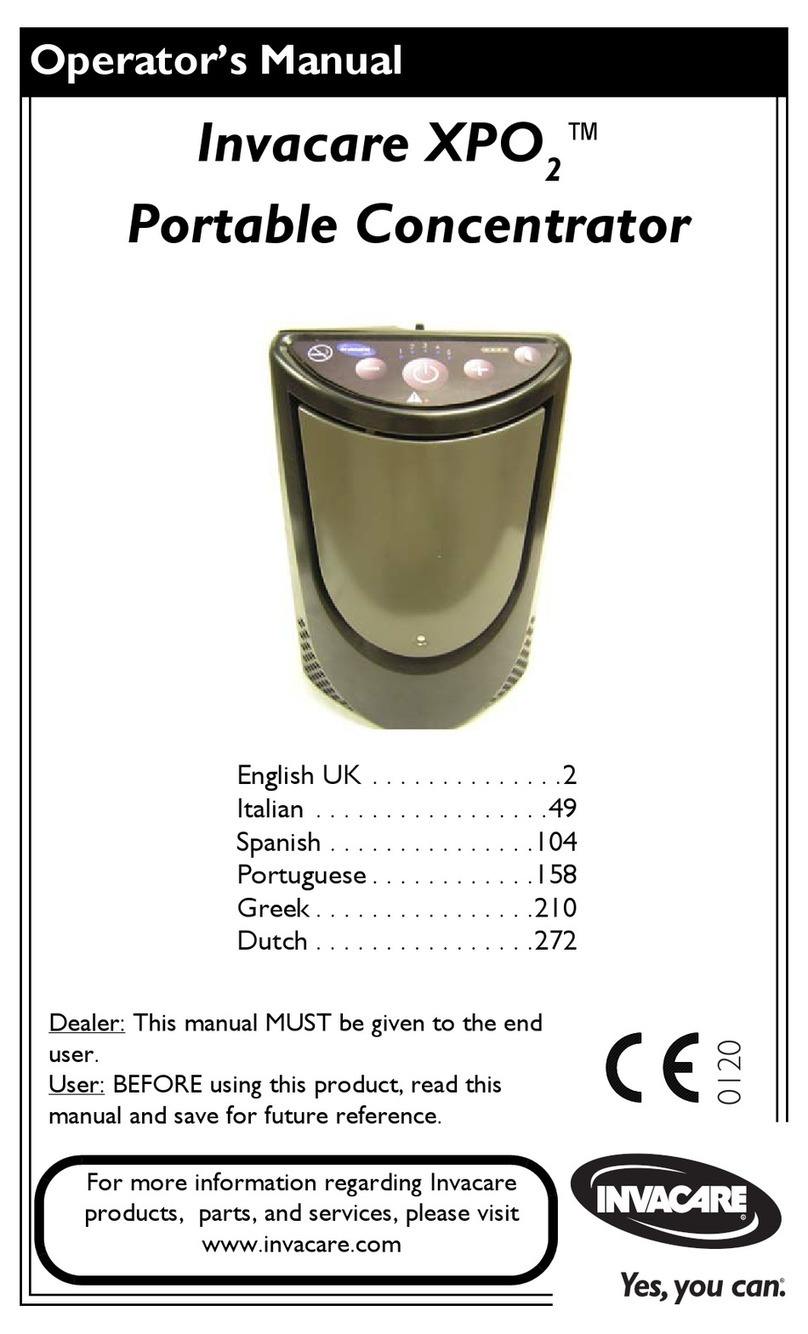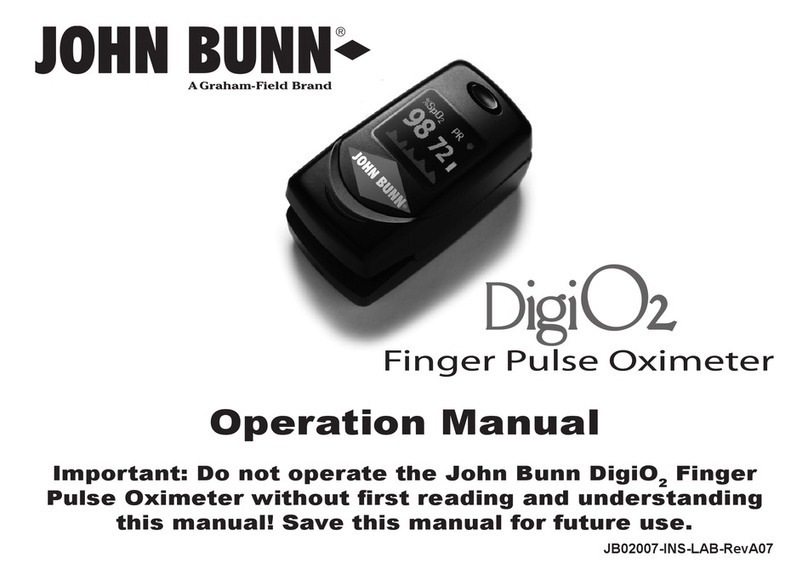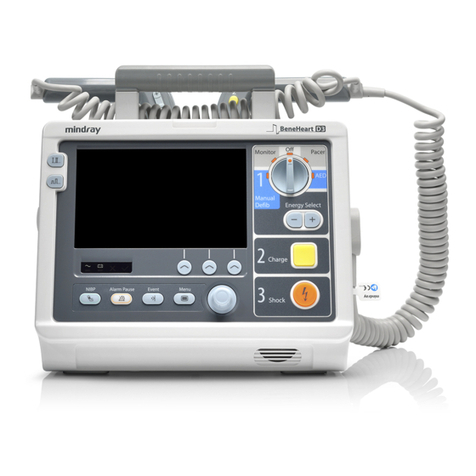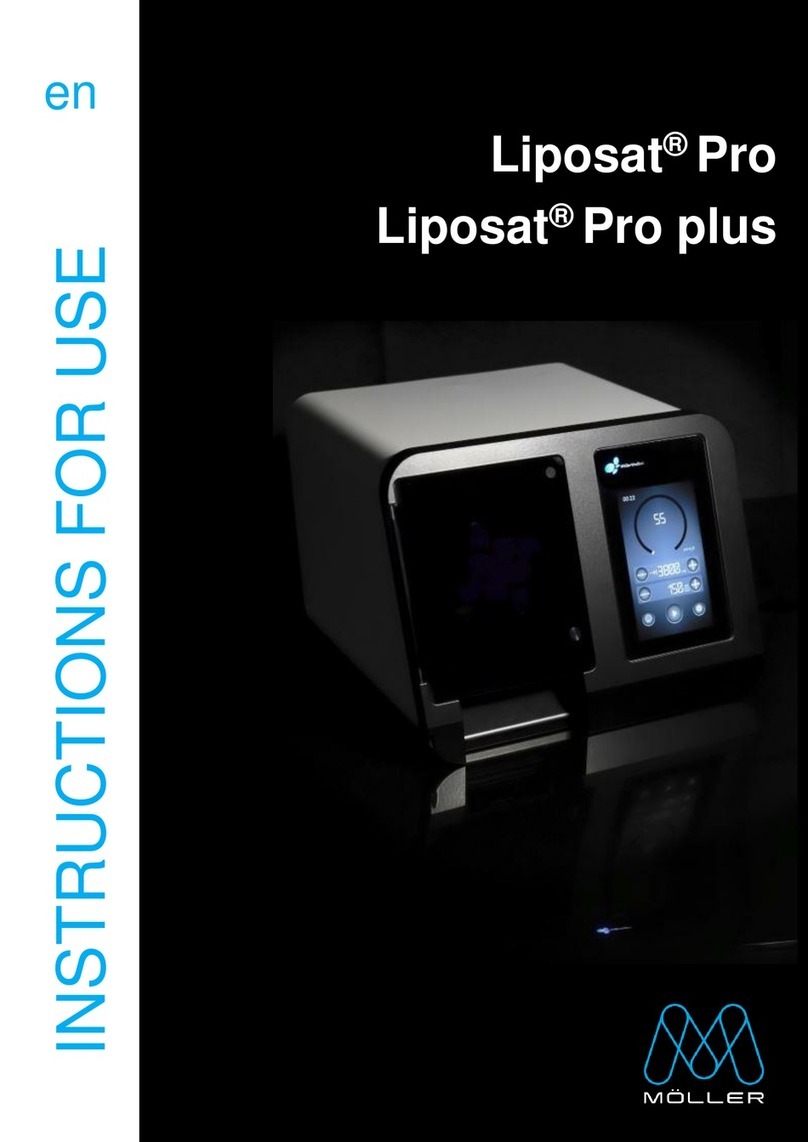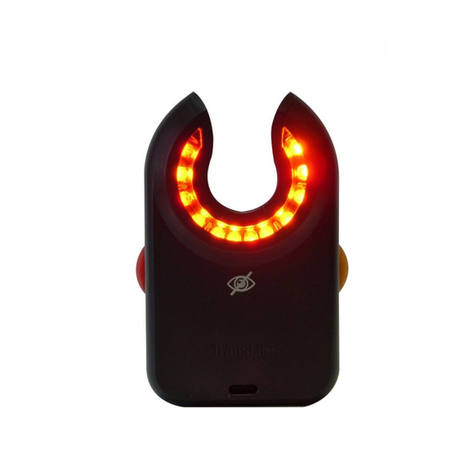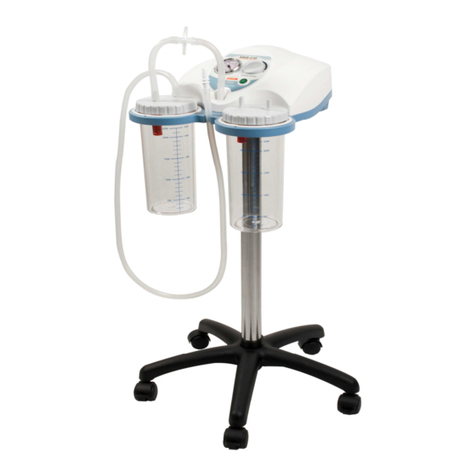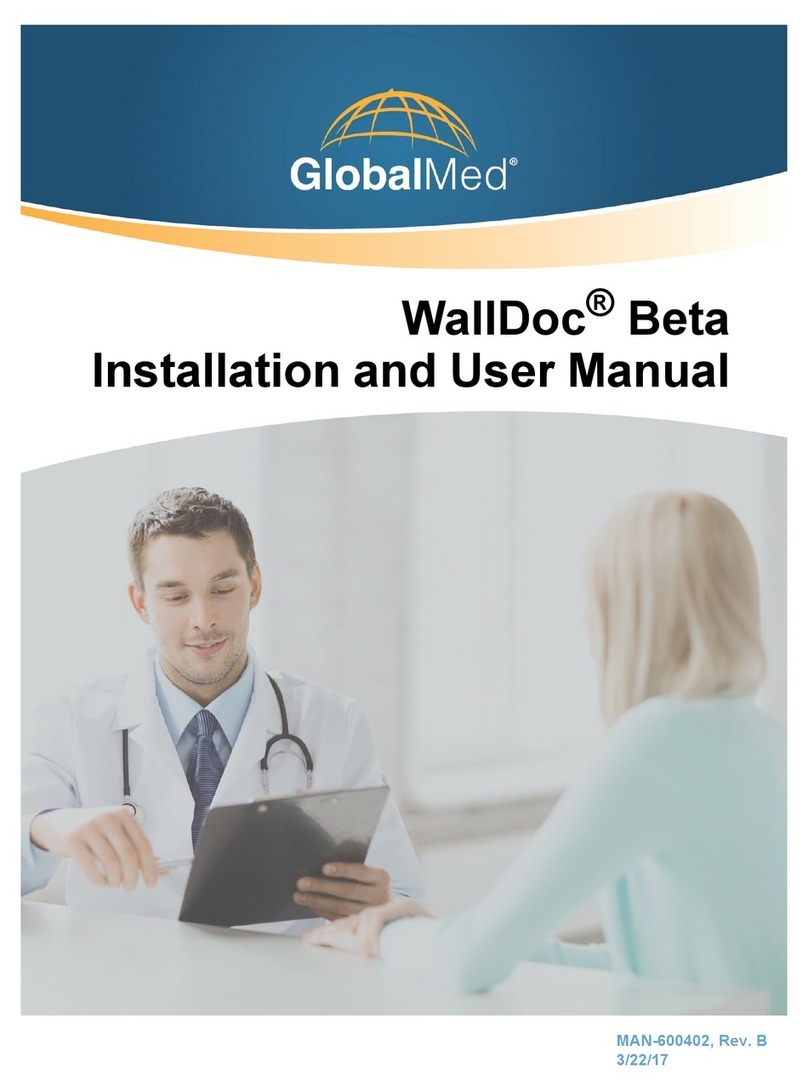Envitec MySign s Guide

Pulse oximeter
Technical Documentation
066-07-1002197_GA_MySignS_FDA-0
USA
Subject to technical changes!
© 06.2014 EnviteC-Wismar GmbH

Pulse oximeter MySign®S
Contents
1 General information ....................................................................................................................................................5
2 Safety information .......................................................................................................................................................6
3 Designated use and functional description ...............................................................................................................9
3.1 Indications for use (designated purpose)............................................................................................................9
3.2 General functional principles and conditions ................................................................................................... 10
3.3 Signal quality, pulsation index, disruptions ...................................................................................................... 10
4 Commissioning ........................................................................................................................................................ 12
4.1 Unpacking and testing the delivery .................................................................................................................. 12
4.2 Parts list .............................................................................................................................................................. 12
4.3 Function test....................................................................................................................................................... 12
4.4 Installation .......................................................................................................................................................... 12
4.5 Charging the battery.......................................................................................................................................... 13
4.5.1 Charging the battery at an external power supply ....................................................................... 13
4.5.2 Charging on a USB port............................................................................................................... 13
4.6 Set up / mounting............................................................................................................................................... 14
5 Operating elements and symbols........................................................................................................................... 15
5.1 Keys and LEDs.................................................................................................................................................. 16
5.2 Display................................................................................................................................................................ 17
5.3 Symbols on the label ......................................................................................................................................... 18
5.4 Symbols shown on the display ......................................................................................................................... 19
6 Operation.................................................................................................................................................................. 20
6.1 Switching the unit on / off .................................................................................................................................. 20
6.2 Main menu ......................................................................................................................................................... 22
6.3 Key lock .............................................................................................................................................................. 23
6.4 Patient type ........................................................................................................................................................ 24
6.5 View .................................................................................................................................................................... 24
6.5.1 Measured value ........................................................................................................................... 25
6.5.2 PTM.............................................................................................................................................. 26
6.5.3 Trend............................................................................................................................................ 27
6.6 Data memory ..................................................................................................................................................... 28
6.6.1 Set flag......................................................................................................................................... 28
6.6.2 Save interval ................................................................................................................................ 28
6.6.3 Measurement series .................................................................................................................... 29
6.6.4 Delete all ...................................................................................................................................... 29
6.7 Alarm settings .................................................................................................................................................... 30
6.7.1 Alarm limits .................................................................................................................................. 31
6.7.2 Alarm volume ............................................................................................................................... 31
6.7.3 Audio alarm.................................................................................................................................. 32
6.7.4 Reminder signal ........................................................................................................................... 32
6.7.5 Application indicator..................................................................................................................... 33
6.8 General settings................................................................................................................................................. 34
6.8.1 Language ..................................................................................................................................... 34
6.8.2 Date/Time .................................................................................................................................... 34
6.8.3 Display ......................................................................................................................................... 34
6.8.4 Reset device (factory setting) ...................................................................................................... 35
6.8.5 Key sound .................................................................................................................................... 35
6.8.6 Pulse sound ................................................................................................................................. 35
6.9 Info ...................................................................................................................................................................... 36
6.9.1 System information ...................................................................................................................... 36
6.9.2 Device personalization................................................................................................................. 36
7 EnviteC SpO2 sensors and accessories ............................................................................................................... 37
7.1 Selection and application of a sensor .............................................................................................................. 37
7.2 Overview of EnviteC sensors and cables........................................................................................................ 38
2 066-07-1002197_GA_MySignS_FDA / 06.14

Pulse oximeter MySign®S
8 Maintenance / cleaning............................................................................................................................................ 39
8.1 Replacing the battery......................................................................................................................................... 40
8.2 Replacing the sensor......................................................................................................................................... 40
9 PC software .............................................................................................................................................................. 41
10 Alarm messages ...................................................................................................................................................... 42
11 Info............................................................................................................................................................................. 43
12 Error Descriptions and Troubleshooting................................................................................................................. 43
13 Technical specifications........................................................................................................................................... 44
13.1 Clinical Accuracy................................................................................................................................................ 46
14 Warranty ................................................................................................................................................................... 50
15 Order information ..................................................................................................................................................... 51
16 EMC Declaration ...................................................................................................................................................... 53
066-07-1002197_GA_MySignS_FDA / 06.14 3

Pulse oximeter MySign®S
This manual was created with great care - should you nevertheless find conflicting details during use of the system,
we request that you inform us in a brief message so that we can correct the discrepancies as quickly as possible.
We reserve the right to make changes to the product due to advancements in optical or other technologies that
are not reflected in the information and figures in this technical documentation. All trademarks mentioned in the
text are registered trademarks of the respective owners and are recognized as protected.
Reprinting, translation and reproduction in any form – even excerpts – require the written approval of the
manufacturer.
This manual is subject to revision by EnviteC-Wismar GmbH.
The latest edition of this technical documentation can be downloaded from our web page
www.envitec.com.
Doc no.: 066-07-1002197_GA_MySignS_FDA-0 © 2014 EnviteC-Wismar GmbH
(Printed in Germany)
EnviteC-Wismar GmbH
a Honeywell Company Tel.: +49 - (0) 3841-360-1
Alter Holzhafen 18 Fax: +49 - (0) 3841-360-222
Germany Internet: www.envitec.com
4 066-07-1002197_GA_MySignS_FDA / 06.14

Pulse oximeter MySign®S
1 General information
The pulse oximeter MySign®S may only be used by operators with sufficient knowledge and due
consideration of this technical documentation and the operating manual. The system must only be
used for the purpose described.
Symbols used in this manual
Danger of death, serious injury or considerable material damage if the relevant safety measures are
not observed.
Important information about the product or a specific part of the manual which should be read with
particular attention.
Commissioning
Always note whether there is any damage to the unit, sensor or adapter cable before starting the system it up. Do
not use units, sensors or adapter cables if damaged.
Storage and packaging
The MySign®S and SpO2 sensors must be stored in their original packaging at temperatures of between -25 °C
and 70 °C.
Maintenance
The pulse oximeter must only be maintained and serviced by the hospital/dealer's technical service personal or
by EnviteC-Wismar GmbH staff.
Disposal
In accordance with Directive 2002/96/EC
(WEEE), the manufacturer will accept the return of the
electrical and electronic device for proper disposal after dismantling!
MR Unsafe
MR Unsafe – keep away from magnetic resonance imaging (MRI) equipment.
066-07-1002197_GA_MySignS_FDA / 06.14 5

Pulse oximeter MySign®S
2 Safety information
Unit
•The MySign®S may not be operated in atmospheres that pose explosion risks.
•The MySign®S may not be used during defibrillation.
•A defective unit may not be used. Parts that are broken, worn out or contaminated must be
replaced.
•The MySign®S and all accessory parts may
only be used by persons who have the
appropriate education to guarantee proper handling.
•Portable and mobile RF (radio frequency) communication devices (e.g. mobile phones) can
interfere with and disrupt electrical medical devices.
Additional information about
electromagnetic compatibility (EMC) can be found in this manual or on our homepage.
•
Medical electrical equipment needs special precautions regarding electromagnetic
compatibility (EMC) and needs to be installed and put into service according to the EMC
information provided in this Operating Manual.
•MySign®S is not suitable for operation in the vicinity of MRI devices or X-ray radiation and
may not be operated in the above environments.
•Exceeding the operating parameters or disregarding the measurement conditions will lead
to incorrect measurements or, in severe cases, damage to the MySign®S
•Incorrect use or positioning of the sensors can result in measurement errors and can lead to
constriction of body parts by the sensor cable, shearing off of skin portions by the sensor, etc.
•Only the sensors and accessory parts approved by EnviteC-Wismar GmbH may be used
with the MySign®S. Sensors and accessories must be in flawless condition. The use of
foreign articles can lead to functional failures or loss of biocompatibility and may endanger
the patient.
•The use of accessories, transducers and cables other than those specified could result in
increased EMC emissions or decreased EMC immunity. See section “15. Order Information”
for details.
•
The equipment should not be used adjacent to or stacked with other equipment and if
adjacent or stacked use is necessary, the equipment should be observed to verify normal
operation in the configuration in which it will be used.
•The taking of medications that alter the blood color, the administration of intravascular dyes
(such as methylene blue or indocyanine green and other dyes) or a high level of
dysfunctional haemoglobin (e.g. carbon monoxide poisoning) can significantly falsify the
measurement result.
•MySign®S is intended to support a diagnosis. MySign®
S may only be used for
determination of a diagnosis within the context of other clinical evidence and symptoms. A
clinical evaluation based solely on the use of MySign®S is not permitted.
•MySign®S is delivered in an appropriate shipping packaging. Do not use MySign®S or the
compatible sensors if one of the parts exhibits transport damage or other damage.
•When using the system with patients, the system may not be connected to a computer by
the data cable.
•
The setting of extreme alarm limits can override the alarm function, which could be
dangerous for the patient.
Rechargeable battery
•Do not throw into fires.
•Do not damage or change the battery's structure in any way.
•Do not allow to come into contact with fluids.
•
Do not store with other metallic objects as this could cause the battery to short-circuit.
6 066-07-1002197_GA_MySignS_FDA / 06.14

Pulse oximeter MySign®S
Risk of Electrostatic Discharge
•Usage in environments with synthetic floor materials (e.g. carpeting) or a relative humidity below
30% is not recommended. Environments with antistatic floor materials are to be preferred.
•If the unit is used in environments with synthetic floor materials, a relative humidity below 30%
or if you are in doubt, discharge any static electricity you may be carrying by touching a grounded
metallic surface or item before touching the unit.
Sensor
•Do not use sensors if damaged.
•
Do not put any mechanical stress (through pulling, stretching or twisting) onto the sensor cable.
Unit
•
This technical documentation is considered part of the unit. Precise compliance with the
technical documentation and the operating manual is a requirement of proper use and correct
handling of the unit as well as for ensuring the safety of the patient and user.
•
Read the technical documentation and the operating manual carefully and completely, as
information that concerns multiple sections is only included once.
•EnviteC only considers itself responsible with regard to the safety, reliability and function of the
units if the assembly, extensions, reconfigurations, changes and repairs are performed by
EnviteC or by a party expressly authorized for this by EnviteC and the unit is used in accordance
with the operating manual and the technical documentation.
•If the unit is not used for a prolonged period of time, the capacity of the battery must be checked
before mobile use and charged first, if necessary.
•Should reasons exist to doubt the accuracy of the measurement, the vital functions of the patient
must first be examined in another way and then inspect the functionality of the MySign®S.
•
The device must be positioned such that the optical and acoustic alarm signals can be
recognized from a minimum distance of 4 m.
Rechargeable battery
•Do not dispose of batteries as household waste.
Sensor
•Before using the sensors, carefully read the associated operating manual as well as all warnings
and other instructions.
•When selecting the sensor, consider the weight and activity level of the patient. Also evaluate
whether there is sufficient blood circulation at the application site.
•Movement artifacts can falsify the measurement result. Make certain that the application site is
kept still.
•The sensor should be protected from heavy exposure to light since this can cause measurement
errors. If the signal quality is not sufficient after about 10 seconds, try affixing the sensor at a
different application site.
•Check sensor and application at least every 4 hours for proper functioning (check position and
patient skin for damage), and reposition if necessary.
•
The sensor contains no latex. The materials used in manufacturing are free of natural latex
proteins. The materials that come into contact with the patient have undergone extensive
biocompatibility testing.
066-07-1002197_GA_MySignS_FDA / 06.14 7

Pulse oximeter MySign®S
Essential Performance
Essential Performance is performance, the absence or degradation of which, would result in an
unacceptable risk, and includes the following functionalities:
•Accuracy of blood oxygen saturation (SpO2) measurement
•Accuracy of pulse rate measurement
•Alarm indication
•Alarm adjustment within safe limits and silence/pause
•Indication of measured results (saturation, pulse) and associated alarm limits on displays
8 066-07-1002197_GA_MySignS_FDA / 06.14

Pulse oximeter MySign®S
3 Designated use and functional description
3.1 Indications for use (designated purpose)
MySign®S is a handheld pulse oximeter with accessory sensors indicated for continuous non-invasive
monitoring of the functional oxygen saturation of arterial hemoglobin (SpO2) and pulse rate for adult and
pediatric (excluding neonatal and infant) patients in hospitals, hospital-type facilities, and mobile units.
For professional use only.
The device is calibrated to functional oxygen saturation.
The areas in the hospital where the unit can be used include general nursing wards, operating rooms,
areas for special procedures and intensive care units both in hospitals and in hospital-like institutions.
Hospital-like areas include, for example, out-patient clinics, sleep laboratories, care facilities, surgical
centers and day clinics.
MySign®S allows for comprehensive basic monitoring of SpO2 and pulse rate including:
•Configuring of upper and lower alarm limits
•Standard alarm limits
•Visual and audible monitoring
The monitor provides retrospective access to the monitoring data via a USB connection to a PC
utilizing the optional MySign PC Software.
The data is stored by the monitor in a trend and event database. It is possible to display trend tables
(vital parameters), store them on a central server for documentation or print them out at any location.
The measurements can also be displayed as a trend diagram.
The sensors are applied to the corresponding body parts of the patient, such as the finger. Based on
the measurement values, pulse-oximetric oxygen saturation (SpO2), pulse rate, pulsation index and
the quality of these signals are made available to the user.
The MySign®S may only be used by persons who have the appropriate education to guarantee
proper handling.
Caution: Federal law (USA) restricts this device to sale by or on the order of a physician.
066-07-1002197_GA_MySignS_FDA / 06.14 9

Pulse oximeter MySign®S
3.2 General functional principles and conditions
The technology of non-invasive pulse oximetry is based on two principles. On one hand, the color of the blood
influenced by oxygen saturation is determined at the two wavelength ranges of red and infra-red
(spectrophotometry). On the other hand, the quantity of arterial blood in tissue (and therefore also the light
absorption of this blood) varies during the pulsation caused by the ejection of blood from the heart into the arteries
(plethysmography).
The color difference caused by the blood saturation can be attributed to the optical properties of the hemoglobin
molecule, or more precisely, to the organic hem component. The hemoglobin is responsible for transporting
oxygen in the blood via oxygenation (O2Hb).
The oxygen can be released again; i.e. the blood is deoxygenated (oxygen saturation decreases), losing its red
color accordingly. As a result, the absorption of red light is more heavily influenced, and the absorption of infra-
red light is less influenced. The pulsation of the arterial blood flow, which changes the blood volume during the
systole and diastole and thereby alters the light absorption, is used for determination of the arterial oxygen
saturation.
Because only the change in light absorption is evaluated, non-pulsing but absorbing substances such as tissue,
bone and venous blood have no effect on the measurement. One red and one infra-red diode serve as light
sources for the measurement. The receiver is a photodiode.
The pulse oximeter measures the ratio of the red and infra-red pulsating absorption, which correlates directly with
oxygen saturation, and displays the oxygen saturation on this basis. In addition, the time intervals between
pulsations are converted into a pulse rate and also displayed.
3.3 Signal quality, pulsation index, disruptions
The pulse oximeter requires a measurable pulse wave in order to correctly determine oxygen saturation values
and pulse rate values. If no or only a very weak pulse wave is detected, incorrect values may be obtained.
The values can also be incorrect if significant movement artifacts occur. The displayed measurement values only
lie within the defined precision range if the bar graph (signal quality indicator) is shown in blue.
Signal quality:
Blue = Good
Yellow =Moderate
Orange =Poor
The sensor’s reading will only be accurate if it is correctly positioned. If attached incorrectly, the sensor’s light
signal will not be aimed straight at the tissue, which can affect the SpO2 reading.
Pulsation Index (PI): PI is a measure of the level of blood pulsation in the tissue and is defined as the quotient of
the pulsatile (IAC) and non-pulsatile (IDC) components of the infra-red light. PI values below 1 can result in
measurement errors.
Utility of PI: Adequate blood flow (pulsation) at the application site is required for a correct measurement. The
pulsation index (PI) is a general indicator of the pulsation strength obtained at the measurement site, and provides
an additional means of signal quality assessment.
Testing of PI: The pulsation index has been evaluated by testing the MySign®S monitor and sensors with a listed
pulse oximeter simulator at pulse modulation levels ranging from 0.2% to 20%.
The pulsation may be negatively influenced by, for example, the use of blood pressure cuffs, arterial
catheters, arterial occlusion or overly tight application of the sensor. Venous pulsation or defibrillation
can also affect the measurement result.
10 066-07-1002197_GA_MySignS_FDA / 06.14

Pulse oximeter MySign®S
The artifact leveling (AL) is used to suppress movement artifacts for the SpO2 and pulse rate
parameters. In addition, the pulse rate is checked for plausibility with a deviation suppression (DS)
function.
The MySign®S is calibrated to pulse-oximetric hemoglobin oxygen saturation with dyshemoglobin-
free blood based on reference measurements via fractional saturation measurement (CO-oximeter).
If the level of dysfunctional hemoglobin
is high, the precision of the measurement is impaired.
Intravascular dyes, nail polish and artificial finger
nails can also impair the precision of the
measurement.
In addition, the measurement precision can be impaired by strong ambient light or direct sunlight. In
such cases, the sensor can be covered.
If you doubt the precision of the measurement, check the vital signs of the patient with the help of
other methods. Then make certain that the MySign®S is functioning properly.
066-07-1002197_GA_MySignS_FDA / 06.14 11

Pulse oximeter MySign®S
4 Commissioning
4.1 Unpacking and testing the delivery
If the shipping box is damaged, notify your shipper. Unpack the MySign®S and its accessories. If a part is missing
or damaged, contact the customer service of EnviteC or your local EnviteC dealer.
4.2 Parts list
1 x pulse oximeter MySign®S
1 x operating manual unit
1 x CD technical documentation unit
1 x USB cable
4.3 Function test
Verify the proper functioning of the MySign®S before using it the first time. Do this by following the further
instructions in section 6.1.
4.4 Installation
Connect the SpO2 sensor to the MySign®S unit as shown below.
Note the arrow on the sensor plug and the unit socket to ensure the correct connection orientation.
Otherwise the contacts could be damaged and correct functioning cannot be guaranteed!
12 066-07-1002197_GA_MySignS_FDA / 06.14

Pulse oximeter MySign®S
4.5 Charging the battery
The battery must be fully charged before using the MySign®S for the first time. It can be charged either at an
external power supply or a USB port on a computer.
4.5.1 Charging the battery at an external power supply
The battery can only be charged at an external power supply using a suitable wall power supply with a USB port
(EnviteC Part No.: 1001829). When using the EnviteC external power supply, charging the battery takes around
4 hours and is completed as soon as the battery symbol is shown as full.
4.5.2 Charging on a USB port
To charge the battery at a USB port, connect it to the USB port on the computer using the enclosed cable. As the
charge current at the port is only around 500 mA, it can take up to 6 hours to charge the battery at a computer.
•Only use power supplies that correspond to the system's specifications
(see “13. Technical specifications”)!
•For more information on the position of the battery indicator, see section “5.2 Display”.
To charge the battery, open the cover on the USB port of the MySign®S, insert the USB cable (data cable /
Part No. 1001815) and connect it to the USB port on a computer or the external power supply.
066-07-1002197_GA_MySignS_FDA / 06.14 13

Pulse oximeter MySign®S
4.6 Set up / mounting
The MySign®S must be set up / mounted as per the requirements at the place of use, on an even surface or using
the universal holder (optional, Part No. 1001801) for all profiles.
Fold out the support provided on the MySign®S and set up the
unit.
Hold the fixed tension arm against the bed frame, for example, and
attach the holder by turning the threaded spindle in a clockwise
direction.
Now insert the holder’s mounting plate into the guide on the back
of the MySign®S and fasten by turning the hand wheel in a
counter-clockwise direction.
The device must be positioned so that the optical and acoustic alarm signals can be recognized from
a minimum distance of 4 m.
14 066-07-1002197_GA_MySignS_FDA / 06.14

Pulse oximeter MySign®S
5 Operating elements and symbols
The system is operated using the membrane keys on the front. All of the system's status and error messages are
shown in plain text on the illuminated screen.
Front Back
No. Description No. Description
Housing ON/OFF key
Display Sensor socket
Operating keys Sound emitter
USB port Support
Alarm LED red/yellow
066-07-1002197_GA_MySignS_FDA / 06.14 15

Pulse oximeter MySign®S
5.1 Keys and LEDs
+
Function keys 1 + 2 (depending on menu)
Example:
Function 1 Function 2
Select key UP
For selecting menu items and changing parameters
(Pulse sound louder)
Select key DOWN
For selecting menu items and changing parameters
(Pulse sound quieter or off)
Main menu or home key
Opens the main menu or brings you back to the main screen
“Pause audio alarm” key with yellow LED
Acknowledges an alarm Mutes it for 120 seconds
Pressing this key briefly twice (double-click) fully switches off the
current audio alarm.
+ Switches the audio alarm off!
LED on as soon as the audio alarm has been switched off.
LED flashes as soon as the reminder signal has also been switched off.
ON/OFF key
For switching the unit on / off
Alarm LED red/yellow
Visual signals, see “10. Alarm signals”
16 066-07-1002197_GA_MySignS_FDA / 06.14

Pulse oximeter MySign®S
5.2 Display
No. Description
1 Date and time indicator
2 Patient type: Shows the preset patient type (adult or child).
Also see section “Patient type”.
3 ID (identification): Shows the current measurement series number.
Also see section “Measurement series”
4 Symbols: See additional table for explanation (5.4)
5 Battery status indicator: See section “Alarm messages”
6 Pulse sound volume: Shows the current volume of the pulse sound. This can be adjusted or switched
off with the select keys “UP” and “DOWN”.
7 Current SpO2 measurement value
8 Upper SpO2 alarm limit
9 Lower SpO2 alarm limit
10 Current pulse measurement value
11 Upper pulse alarm limit
12 Lower pulse alarm limit
13
Bar graph: Shows the plethysmogram as a bar graph and indicates the signal quality with color changes.
Blue means good signal quality, yellow moder
ate and orange poor. See also section “Precision,
disruptions”
14 Pulsation index (PI): A the ratio of the pulsatile signal (i.e. due to blood pulsation) to the non-pulsatile
signal obtained at the measuring site. < 1 means poor/low pulsation at the measurement site.
15 Information field: Also see “Information” section.
16 Description of the function keys
066-07-1002197_GA_MySignS_FDA / 06.14 17

Pulse oximeter MySign®S
5.3 Symbols on the label
Follow the instructions given in the
operating manual! IP54
Protected against spray water and dust
Manufacturer + date of
manufacture
Unit corresponds to type BF – Not protected
from the effects of defibrillators
PN Product number
Follow the disposal instructions!
SN Serial number CE Conformité Européenne (European conformity)
MR Unsafe
18 066-07-1002197_GA_MySignS_FDA / 06.14

Pulse oximeter MySign®S
5.4 Symbols shown on the display
Key lock ON
Mains operation/charge
Key lock OFF Connecting the system to a computer
View Flag for marking within a dataset
Data memory
Error (yellow = minor / red = severe)
Alarm settings
Alarm condition
(Symbol to display an alarm condition)
General settings Information
Help
Info
Up ! Low level priority warning
Down !! Medium level priority warning
Audio alarm off
Bar graph signal quality
Audio alarm off only for current alarm
Switch off
Pause sound
For pulsation index (PI) bar graph
see section 11
Application indicator
(see also section “Application indicator) Pulse sound volume
Patient type Pulse (heart beat)
Sensor off
Pulse sound off
Plug disconnected Function off
Sensor defective Function on
Battery symbol
066-07-1002197_GA_MySignS_FDA / 06.14 19

Pulse oximeter MySign®S
6 Operation
All functions of the unit and the necessary initial configuration are described in this section.
6.1 Switching the unit on / off
Once the unit has been switched on, it will automatically test all of its internal functions and components. While
performing these tests, the symbol “Follow the operating manual” appears on the display for about 3 seconds.
A signal tone is also emitted during the function test, and all LEDs (alarm and audio alarm paused)
are activated. If you do not hear or see these indications, repeat the switching-on process. If the
problem persists, please contact customer service.
The sensor is also checked during the function test, so ensure it is connected. However, it is not
checked for accuracy.
Switching on the unit
Hold down the key for around 1 second.
The unit will be ready to take measurements after approx. 5 seconds.
Example: Information displayed while the unit is being switched on:
The device personalization is shown if this has been entered using
the MySign®PC software.
If the measurement data have been personalized
using the
computer's software, the screen will display a prompt asking whether
this data is to be copied over after the unit has been switched on.
20 066-07-1002197_GA_MySignS_FDA / 06.14
Table of contents
Other Envitec Medical Equipment manuals
Popular Medical Equipment manuals by other brands
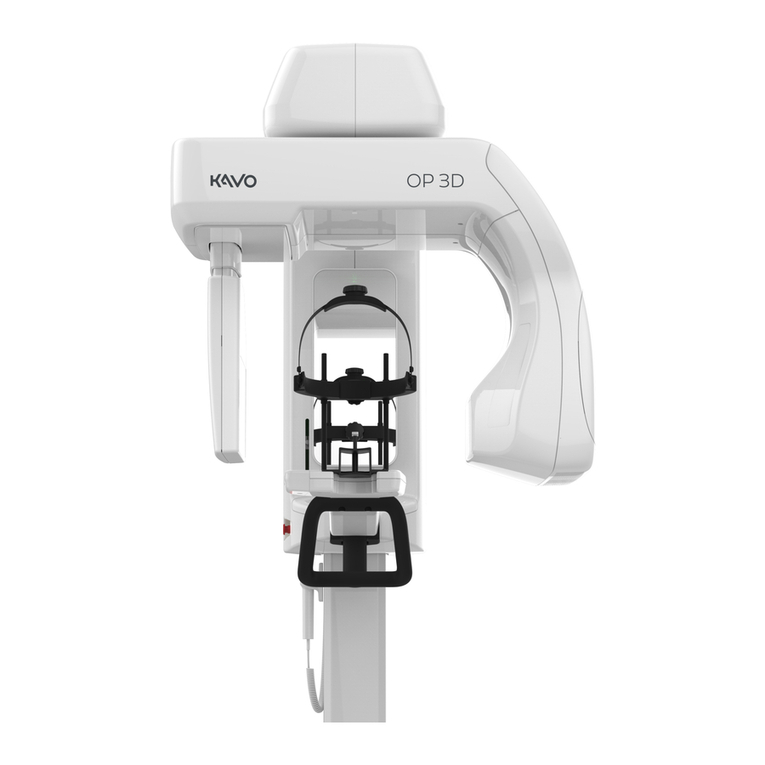
KaVo
KaVo ORTHOPANTOMOGRAPH OP 3D User and installation manual
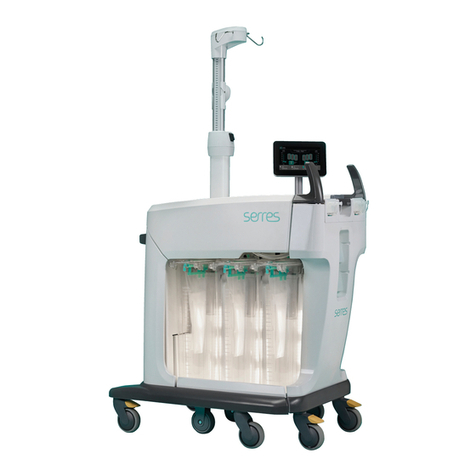
SERRES
SERRES Saga Quick installation guide
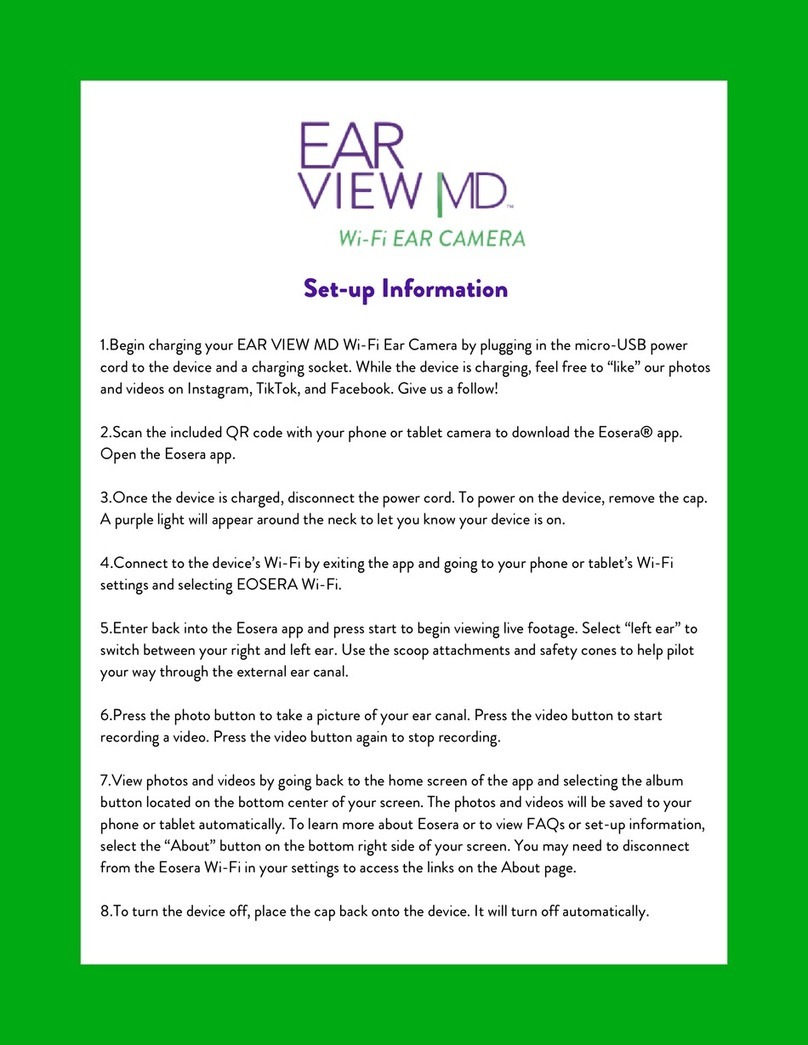
Eosera
Eosera EAR VIEW MD Setup manual
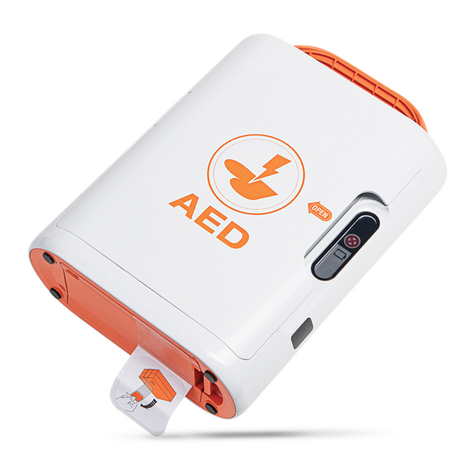
Mediana
Mediana HeartOn A16 Series Operator's manual

Cardinal Health
Cardinal Health Disposable Neonatal Blood Pressure Cuffs Directions for use
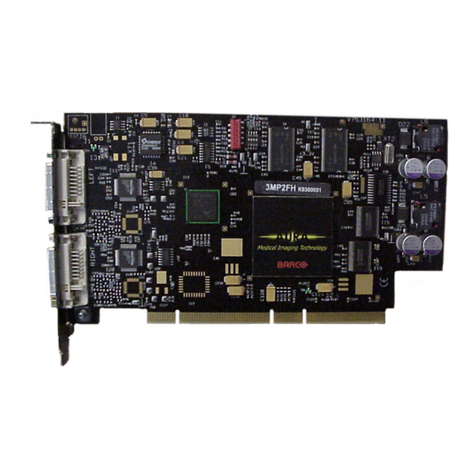
Barco
Barco CORONIS 1MP System manual

